Biochar Produced from Bagasse Pellets
Biochar as soil additive was widely applied as one of the most effective practice to reduce greenhouse gas. Soil amendment biochar helps to raise water storage capacity and decrease soil nutrient leaching, which in turn increases soil fertility and can help to reduce greenhouse gas emissions because it stores carbon in the soil. Soil carbon sequestration of terrestrial ecosystem has attracted great interest in recent years.
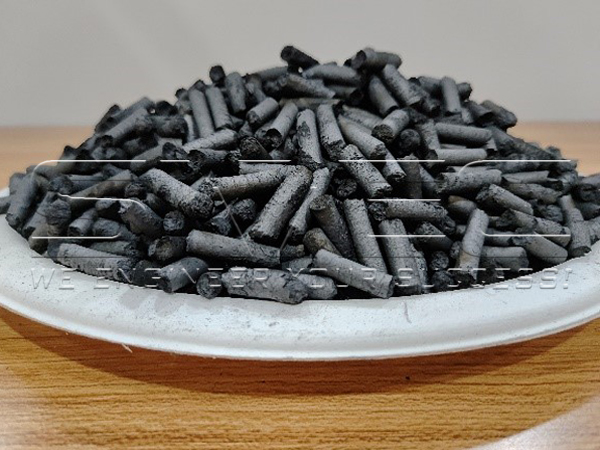
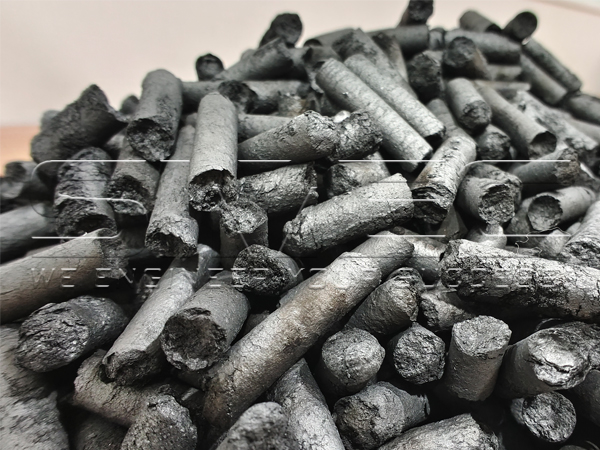
SIMEC focus on technology R&D for converting diversity of biomasses, including bagasse, into qualified biochar which comply with EBC-Agro Organic criterion, with lower content of polycyclic aromatic hydrocarbons and H/Corg ratio (molar).
In December 2022, SIMEC was commissioned to conduct a research program of sugar cane bagasse pelletization and carbonization. According to the agreement with research institute in Sweden, SIMEC prepared the bagasse raw material originating in Guangxi, China for the test. Dry bagasse consists of 45% cellulose, 28% hemicellulose, 20% lignin, and 1% minerals, etc. The pelletization and carbonization tests yielded ideal results.
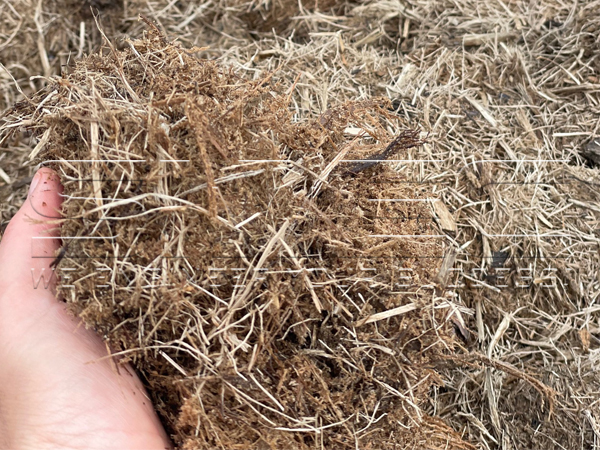
Sugarcane Bagasse
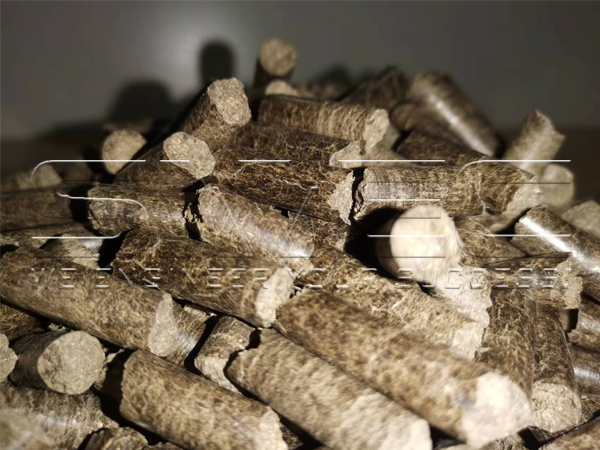
Bagasse Pellets
Analysis Result of Bagasse Pellets and Biochar:
| Parameter | Bagasse Pellets | Biochar |
| Moisture as Received | 10.08% | 1.15% |
| Ash Content | 4.86% | 13.19% |
| Volatile Matter | 77.07% | 7.49% |
| Fixed Carbon | 18.07% | 79.32% |
| High Calorific Value | 4734 kcal/kg | 6994 kcal/kg |
| Low Calorific Value | 4055 kcal/kg | 6750 kcal/kg |
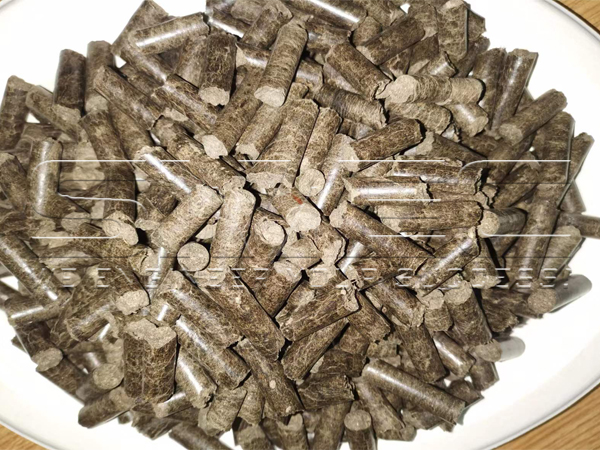
Bagasse Pellets
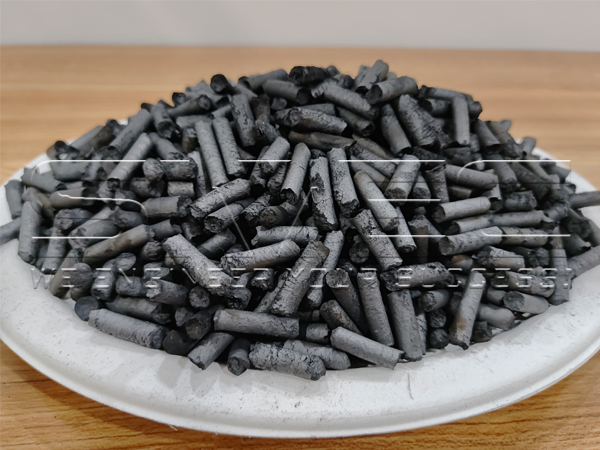
Biochar Pellets
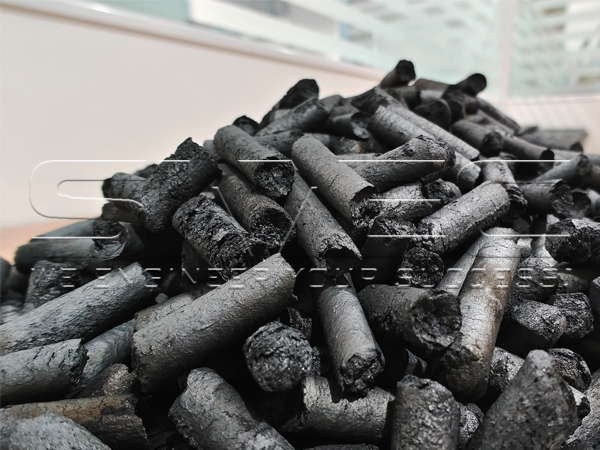
Biochar Pellets
| Parameter | EBC-Feed |
EBC-Agro Organic |
EBC-Agro | LOQ | Unit | db |
| Naphthalene | 0.1 | mg/kg | 2 | |||
| Acenaphthylene | 0.1 | mg/kg | < 0.1 | |||
| Acenaphthene | 0.1 | mg/kg | < 0.1 | |||
| Fluorene | 0.1 | mg/kg | < 0.1 | |||
| Phenanthrene | 0.1 | mg/kg | 0.8 | |||
| Anthracene | 0.1 | mg/kg | 0.4 | |||
| Fluoranthene | 0.1 | mg/kg | 0.2 | |||
| Pyrene | 0.1 | mg/kg | 0.1 | |||
| Benz(a)anthracene | 0.1 | mg/kg | < 0.1 | |||
| Chrysene | 0.1 | mg/kg | < 0.1 | |||
| Benzo(b) fluoranthene | 0.1 | mg/kg | < 0.1 | |||
| Benzo(k) fluoranthene | 0.1 | mg/kg | < 0.1 | |||
| Benzo(a) pyrene | 0.1 | mg/kg | < 0.1 | |||
| Indeno(1,2,3-cd) pyrene | 0.1 | mg/kg | < 0.1 | |||
| Dibenz(a,h)anthracene | 0.1 | mg/kg | < 0.1 | |||
| Benzo(g,h,i)perylene | 0.1 | mg/kg | < 0.1 | |||
| Total 8 EFSA-PAH excl. LOQ | 1 | 1 | 1 | mg/kg | (n. c.) | |
| Total 16 EPA-PAH excl. LOQ | 4 | 6 | mg/kg | 3.50 | ||
| Benzo(e) pyrene | < 1 | < 1 | < 1 | 0.1 | mg/kg | < 0.1 |
| Benzo-(j)-fluoranthen | < 1 | < 1 | < 1 | 0.1 | mg/kg | < 0.1 |
| H/C ratio (molar) | 0.25 | |||||
| H/Corg ratio (molar) | <0.7 | <0.7 | <0.7 | 0.25 |
Confidentiality Claim:
This report (including any attachments) is intended only for the use of the individual or entity to whom it is addressed, and contains information that is privileged, confidential, and exempt from disclosure under NDA and/or applicable laws.
You are hereby notified that any dissemination, distribution, or duplication of this report/file by someone other than the addressee or its designated agent is strictly prohibited and may be illegal.
SIMEC reserves the right of final interpretation of this report.